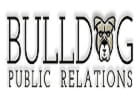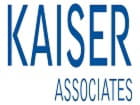ARLINGTON, Va. and LONDON, May 07, 2018 (GLOBE NEWSWIRE) -- Willis Towers Watson (NASDAQ: WLTW) (the “Company”), a leading global advisory, broking and solutions company, today announced financial results for the first quarter of 2018, which ended March 31, 2018.
As of January 1, 2018, the Company adopted Accounting Standards Codification 606, Revenue From Contracts With Customers (“ASC 606”). The adoption of this new pronouncement had a material impact to the timing, amounts and classifications of certain results and balances within our condensed consolidated financial statements in 2018. As we move past the adoption year, the full year financial results will generally be more comparable to the 2017 reported results.
As required by ASC 606, under the modified retrospective method of adoption, the Company has provided the impact to the affected line items within the condensed consolidated financial statements for 2018. The 2017 comparative financial line items have not been restated in accordance with the new standard. In an effort to allow the reader to better understand the impact this guidance had on our reported results, we have also included our 2018 results, without the adoption effects of ASC 606, as supplemental information. A more comprehensive explanation of the changes in accounting methodology can be found in the supplemental slides to this press release which have been posted to www.willistowerswatson.com.
The Company also adopted ASU No. 2017-07, Improving the Presentation of Net Periodic Pension Cost and Net Periodic Postretirement Benefit Cost which became effective January 1, 2018 and has been applied retrospectively. As a result of the adoption, the current service-cost component for postretirement benefit cost will remain in Salaries and Benefits and the other components will be included in the Other income, net line.
Excluding the Revenue Standard Without the impact of ASC 606, Revenues were $2.6 billion for the quarter, an increase of 10% (4% increase constant currency and 6% increase organic) as compared to $2.3 billion for the same period in the prior year.
Net income attributable to Willis Towers Watson for the first quarter of 2018 was $441 million, a 28.2% increase from $344 million for the prior-year first quarter. For the quarter, diluted earnings per share were $3.31, and adjusted diluted earnings per share were $4.41. Net income attributable to Willis Towers Watson and diluted earnings per share for the first quarter of 2018 include pre-tax $43 million of transaction and integration expenses. The U.S. GAAP tax rate for the quarter was 18% and the adjusted tax rate for the quarter used in calculating adjusted diluted earnings per share was 20%.
Net income for the first quarter of 2018 was $447 million, a 27% increase from net income of $352 million for the prior-year first quarter. Adjusted EBITDA for the first quarter of 2018 was $841 million, or 33.0% of Revenues, as compared to Adjusted EBITDA of $708 million, or 30.5% of Revenues, for the prior-year first quarter. This represents an increase of 250 basis points in Adjusted EBITDA margin over the prior-year first quarter. The first quarter is a seasonally strong quarter due to the renewal periods for some lines of business.
Including the Revenue StandardWith the impact of ASC 606, Revenues were $2.3 billion for the quarter.
Net income attributable to Willis Towers Watson for the first quarter of 2018 was $215 million. For the quarter, diluted earnings per share were $1.61, and adjusted diluted earnings per share were $2.71. Net income attributable to Willis Towers Watson and diluted earnings per share for the first quarter of 2018 include pre-tax $43 million of transaction and integration expenses. The U.S. GAAP tax rate for the quarter was 16% and the adjusted tax rate for the quarter used in calculating adjusted diluted earnings per share was 20%.
Net income for the first quarter of 2018 was $221 million. Adjusted EBITDA for the first quarter of 2018 was $557 million, or 24.3% of Revenues.
As anticipated for the first quarter, Free Cash Outflow was $47 million. The annual bonus pay-out, which is aligned to Company performance and paid in March, was greater, as expected, than the March 2017 pay-out, as our Company performance was significantly better in 2017 than in 2016. We continue to estimate our Free Cash Flow to be in the range of $1.1 to $1.3 billion for 2018.
“I’m extremely pleased with the first quarter results,” said John Haley, Willis Towers Watson’s chief executive officer. “As anticipated, the strong momentum from the end of 2017 carried over into the first quarter of 2018. We remain committed to achieving our original integration goals and have been pleased with the progress made. More important, we are seeing the evolution of Willis Towers Watson as we envisioned during the original merger discussions. Our colleagues have been essential in building a strong foundation for the combined company and our client response and support has confirmed our strategy of providing integrated solutions. I’m very excited about our long-term prospects as our journey continues.”
First Quarter Company Highlights
Segment HighlightsBeginning in 2018, we made certain changes that affect our segment results. These changes include the realignment of certain businesses within our segments, as well as changes to certain allocation methodologies to better reflect the ongoing nature of our businesses. The prior period comparatives have been retrospectively adjusted to reflect our current segment presentation. These changes were unrelated to ASC 606.
Human Capital & Benefits
Excluding the Revenue StandardExcluding the impact of ASC 606, for the quarter, the Human Capital & Benefits (HCB) segment had revenues of $1,022 million, an increase of 8% (3% increase constant currency and 4% increase organic) from $949 million in the prior-year first quarter. The constant currency and organic revenue growth in the first quarter of 2017 was 5%. Retirement revenues increased in the first quarter led by North America, Great Britain and International. North America increased as a result of carry-forward bulk lump sum work from last year, a general increase in project work, partially offset by a decline related to the Canadian triennial valuation cycle. Great Britain increased as a result of continued work related to the Pensions Freedom Act and actuarial risk solutions. International revenue growth was driven by strong results in China and Hong Kong. Western Europe revenues declined due to timing in the pension brokerage business and an anticipated decline in demand in the Netherlands. Health and Benefits revenues grew across all regions. Global Benefit sales continue to be strong in Great Britain, Western Europe and International. Revenue growth in North America was muted due to the timing of product revenue, negative timing of MDI and lower new business activity. Talent and Rewards experienced revenue growth in all regions as a result of greater demand for advisory work and software and product revenues. The Technology and Administration business in Great Britain experienced revenue growth as a result of new administration clients and project activity. The HCB segment had an operating margin of 38% compared to 36% for the prior-year first quarter.
Including the Revenue StandardThe HCB segment had revenues of $832 million and an operating margin of 23%. The primary driver in the different accounting methodologies is that more of our revenue, related to healthcare policies, is recognized over time, which is more consistent with our service delivery in this area.
Corporate Risk & Broking
Excluding the Revenue StandardExcluding the impact of ASC 606, for the quarter, the Corporate Risk & Broking (CRB) segment had revenues of $758 million, an increase of 13% (5.5% increase constant currency and 6% increase organic) from $672 million in the prior-year first quarter. Constant currency and organic revenue growth was 3% in the first quarter of 2017. Revenue growth was experienced in every region. International led revenue growth, primarily in CEEMEA and Asia, with a slight offset due to softness in Latin America and Australia. Great Britain and North America both had strong growth. Great Britain’s revenues were impacted by the growth noted in CEEMEA, and strong new business in Facultative and Financial Lines. North America’s revenue growth was a result of strong new business, positive timing, and a retention rate of 95%. Western Europe’s growth was led by France’s strong renewal season and strength in Specialty, offset slightly by a decline in Germany. The CRB segment had an operating margin of 19% compared to 17% for the prior-year first quarter.
Including the Revenue StandardFor the quarter, the CRB segment had revenues of $740 million and an operating margin of 17%. The primary difference between accounting methodologies is the proration of additional Affinity products under the new standard. This will have no impact on the 2018 annual revenues as all policies were effective as of January 1st. The difference in expense is due to the new requirement to defer placement costs and expense them upon the effective date of a policy.
Investment, Risk & Reinsurance
Excluding the Revenue StandardExcluding the impact of ASC 606, for the quarter, the Investment, Risk & Reinsurance (IRR) segment had revenues of $539 million, an increase of 10% (3% increase constant currency and 5% increase organic) from $491 million in the prior-year first quarter. The constant currency and organic revenue growth in the first quarter of 2017 was 5%. Reinsurance grew as a result of solid renewals and strong new business, especially in North America. Wholesale grew from new business momentum and some positive timing as compared to the first quarter of the prior year. Max Matthiessen grew from growth in assets under management and new business. Insurance Consulting and Technology (ICT) grew as a result of an increase in consulting projects and software sales. Investment revenues grew as a result of a new client implementation. Underwriting and Capital Management experienced a decline in constant currency revenue as a result of the divestiture of the U.S. programs business in 2017 and the Loan Protector businesses in the first quarter of 2018. The IRR segment had a 45% operating margin, up 110 basis points from the prior-year first quarter. IRR experiences a seasonally high operating margin in the first quarter, primarily driven by the timing of revenue in reinsurance.
Including the Revenue StandardFor the quarter, the IRR segment had revenues of $574 million and an operating margin of 45%. The primary driver in the different accounting methodologies is related to the change of revenue recognition for the proportional treaty reinsurance broking arrangements to recognizing the estimated revenue upon the effective date of the policy.
Benefits Delivery and Administration
Excluding the Revenue StandardExcluding the impact of ASC 606, for the quarter, the Benefits Delivery and Administration (BDA) segment had revenues of $195 million, an increase of 8% (8% increase constant currency and 8% increase organic) from $181 million in the prior-year first quarter. The Individual Marketplace led the segment growth due to increased membership from the 2017 fall enrollment period. Group Marketplace and Benefits Outsourcing grew as a result of additional 2018 enrollments, and new outsourcing client wins and special projects. The BDA segment had an operating margin of 22% as compared to 21% for the prior-year first quarter.
Including the Revenue StandardThe BDA segment had revenues of $122 million and an operating margin of negative 26%. The primary driver in the difference between accounting standards is that the Individual Marketplace revenues are now being recognized at the date of placement rather than prorating the revenues through the twelve-month policy. Most of the revenue generated by placements made in the 2017 fall enrollment period was recorded as an adjustment to the opening balance of Retained Earnings as of January 1, 2018. Annually, the overall revenue profile should not change, as the policies placed during the fall 2018 enrollment season will be recognized immediately under the new standard.
Reconciliation of Segment Operating Income to Income from Operations before Income Taxes
For the first quarters of 2018 and 2017, the Company recorded expenses that are excluded from our segment operating income. The following table reconciles the difference.
| Excluding Revenue Standard | Excluding Revenue Standard | Including Revenue Standard | ||||||||
| Three Months ended March 31, | ||||||||||
| Segment Operating Income | $ | 813 | $ | 714 | $ | 547 | ||||
| Amortization | (141 | ) | (151 | ) | (141 | ) | ||||
| Restructuring costs | — | (27 | ) | — | ||||||
| Transaction and integration expenses | (43 | ) | (40 | ) | (43 | ) | ||||
| Unallocated, net | (91 | ) | (95 | ) | (104 | ) | ||||
| Income from Operations | 538 | 401 | 259 | |||||||
| Interest expense | 51 | 46 | 51 | |||||||
| Other income, net | (56 | ) | (43 | ) | (56 | ) | ||||
| Income from operations before income taxes | $ | 543 | $ | 398 | $ | 264 | ||||
Conference Call
The Company will host a live webcast and conference call to discuss the financial results for the first quarter of 2018. It will be held on Monday, May 7, 2018, beginning at 9:00 a.m. Eastern Time, and can be accessed via the Internet at www.willistowerswatson.com. The replay of the call will be available shortly after the live call for a period of three months. A telephonic replay of the call will also be available for 24 hours at 404-537-3406, conference ID 6847517.
About Willis Towers Watson
Willis Towers Watson (NASDAQ: WLTW ) is a leading global advisory, broking and solutions company that helps clients around the world turn risk into a path for growth. With roots dating to 1828, Willis Towers Watson has more than 43,000 employees and services clients in more than 140 countries and territories. We design and deliver solutions that manage risk, optimize benefits, cultivate talent, and expand the power of capital to protect and strengthen institutions and individuals. Our unique perspective allows us to see the critical intersections between talent, assets and ideas — the dynamic formula that drives business performance. Together, we unlock potential. Learn more at willistowerswatson.com.
Select Questions and Answers
| Q1: | The new accounting standard (ASC 606) will impact your 2018 earnings by approximately $0.40 of EPS. Is this a one-time adoption issue, and what is the driver behind the impact? |
| The impact of the new accounting standard is a one-time impact to revenue and expenses. The main driver of the annual revenue loss in 2018 is how the new accounting standard applies to health care brokerage policies. We adopted the open contracts method as defined in ASC 606, which resulted in the Company not having a retained earnings adjustment upon implementation of the standard for this offering. In the past, we recognized the revenue at the time we sold the policy. Under the new accounting standard, we must pro-rate the revenue over the 12 month period. Approximately 40% of the healthcare policies are sold after January 1st. Thus, we expect that approximately $50 million dollars that would have been recognized in 2018 under the old accounting standard, will now be recognized in 2019. | |
| Q2: | What is the right way to think about EPS in 2019? |
| The 2019 EPS should reflect the addition of the $50 million of the 2018 pro-rated revenues, much of which will be recognized in Q1 2019. The 2019 financials will actually reflect a full year of revenues as the “new standard” only impacts 2018, the adoption period. All things being equal, the 2019 EPS models created under the old accounting standard should not change. For example, if under the old accounting standard the Adjusted EPS was $11.00, it should remain at $11.00 under the new accounting standard (ASC 606). | |
| Q3: | What is the impact of the new accounting standard (ASC 606) on the segments? |
| Posted to our website are supplemental ASC 606 slides with details of the impacts to the segments for the first quarter of 2018. | |
| Q4: | The 2017 segment results are different from what was reported. Why is this? |
| As part of the continued review of our portfolio, we moved some business groups from one segment to another. There was no material restructuring related to these moves, but we felt it was important to align the teams to the proper segments to take full advantage of integrated opportunities. Included in our supplemental slides, that have been posted to our website, we have an updated unaudited 2017 pro forma schedule for ASC 606 which includes the 2017 recast segment details. | |
| Q5: | The original tax guidance for 2018 indicated a tax rate of approximately 24%. After just one quarter, the guidance was updated to a range of 23% to 24%. Is there a possibility the tax guidance will be reduced again? Is the tax guidance based on the old accounting or new accounting standard? |
| We continue to gain a better understanding of the impact of U.S. Tax Reform on our 2018 outlook. We will continue to analyze the impact of U.S. Tax Reform as additional guidance is announced and update guidance as needed. The 2018 tax guidance is appropriate for both old and new accounting standards. | |
| Q6: | Free Cash Flow was negative in the first quarter. How does this impact the overall goal of achieving $1.1 to $1.3 billion in 2018? |
| Annual bonuses are paid in the first quarter. Given the strong performance in 2017, the annual bonuses were much higher than in the previous year. We anticipated having a cash outflow in the first quarter. Our cash flow builds throughout the year and we are maintaining our overall goal of having Free Cash Flow of $1.1 to $1.3 billion in 2018. | |
| Q7: | What is the long-term Free Cash Flow goal beyond 2018? |
| As we look at the longer-term, past 2018, Free Cash Flows are expected to approximate 75% to 80% of Adjusted EBIDTA. | |
| Q8: | Given the renewals that transpired in the first quarter, what is your view of the pricing environment? |
| For a comprehensive look at overall market pricing in the primary and reinsurance markets, please view the “Marketplace Realities: Spring 2018 Update”, and the Willis Re: Reinsurance Market Report April 2018: Results for 2017” which can both be found on the Willis Towers Watson website. We believe that pricing in primary insurance was neutral to slightly up depending on product class and that reinsurance pricing was neutral to our results. | |
| Q9: | How much did Forensic work help the first quarter growth rate? |
| It was less than 1% of the CRB growth rate. | |
| Q10: | What was the impact of foreign currency movement for the first quarter? |
| Revenue included $123 million of positive currency movement in the first quarter. The impact of currency fluctuations on adjusted earnings per share was positive $0.24 in the first quarter. | |
| Q11: | The dollar has had a big move, so how should we be thinking about the benefit for 2018? |
| The US dollar has weakened in the first quarter of 2018. If the dollar doesn’t move going forward, foreign exchange could help us in 2018. If the dollar moves directionally against our top three currencies that we have over the remainder of the year; the Pound, Euro, Canadian dollar, a 5% change would lower our operating earnings approximately -$1 million, net of tax, or -$0.01 AEPS on operating earnings. | |
| Q12: | In the reconciliation of Segment Operating Income to Income from operations before income taxes what is the difference of the ‘unallocated, net’ and the ‘other income, net’? |
| The ‘unallocated, net’ includes certain costs, primarily those related to corporate functions which are not directly related to the segments and certain differences between budgeted expenses determined at the beginning of the year and actual expenses that we report for U.S. GAAP purposes. The ‘other income, net’ primarily includes the impact of foreign currency, gains and losses on dispositions, and a credit related to pension. As a result of the adoption of ASU No. 2017-07, Improving the Presentation of Net Periodic Pension Cost and Net Periodic Postretirement Benefit Cost, the non-service cost component of pension credit is now included in ‘other income, net’ whereas prior to the adoption was part of ‘unallocated, net’. |
Willis Towers Watson Non-GAAP Measures
In order to assist readers of our condensed consolidated financial statements in understanding the core operating results that Willis Towers Watson’s management uses to evaluate the business and for financial planning, we present the following non-GAAP measures: (1) Constant Currency Change, (2) Organic Change, (3) Adjusted Operating Income, (4) Adjusted EBITDA, (5) Adjusted Net Income, (6) Adjusted Diluted Earnings Per Share, (7) Adjusted Income Before Taxes, (8) Adjusted Income Taxes/Rate and (9) Free Cash Flow.
The Company believes that these measures are relevant and provide useful information widely used by analysts, investors and other interested parties in our industry to provide a baseline for evaluating and comparing our operating performance, and in the case of free cash flow, our liquidity results.
Additionally, in 2018, we adopted ASC 606, which had a material impact on the amount, timing and classification of certain revenues and costs included in our condensed consolidated financial statements. Since the Company adopted the guidance using the modified retrospective method, it has provided the impact to the affected financial statement line items within the condensed consolidated financial statements for 2018; the 2017 comparative financial statement line items have not been restated in accordance with the new standard. In an effort to help the reader better understand the impact that this guidance had on our non-GAAP measures, we have presented these measures as reported, as well as without the adoption of ASC 606.
Further, because we have linked significant executive compensation performance targets for 2018 to the results of our non-GAAP measures calculated without the adoption of ASC 606, we believe it is necessary to disclose the calculations of these compensation metrics for calendar year 2018.
Within these measures referred to as “adjusted”, we adjust for significant items which will not be settled in cash, or which we believe to be items that are not core to our current or future operations. Some of these items may not be applicable for the current quarter, however they are expected to be part of our full-year results. These items include the following:
- Restructuring costs and transaction and integration expenses - Management believes it is appropriate to adjust for restructuring costs and transaction and integration expenses when they relate to a specific significant program with a defined set of activities and costs that are not expected to continue beyond a defined period of time, or one-time Merger-related transaction expenses. We believe the adjustment is necessary to present how the Company is performing, both now and in the future when these programs will have concluded.
- Gains and losses on disposals of operations - Adjustment to remove the gain or loss resulting from disposed operations.
- Pension settlement and curtailment gains and losses - Adjustment to remove significant pension settlement and curtailment gains and losses to better present how the Company is performing.
- Provisions for significant litigation - We will include provisions for litigation matters which we believe are not representative of our core business operations.
- Venezuelan currency devaluation - Foreign exchange losses incurred as a consequence of the Venezuelan government’s enforced changes to exchange rate mechanisms.
- Tax effects of internal reorganization - Relates to the U.S. income tax expense resulting from the completion of internal reorganizations of the ownership of certain businesses that reduced the investments held by our U.S.-controlled subsidiaries.
- Tax effect of U.S. Tax Reform - Relates to the (1) U.S. income tax adjustment of deferred taxes upon the change in the federal corporate tax rate, (2) the impact of the one-time transition tax on accumulated foreign earnings net of foreign tax credits, and (3) the re-measurement of our net deferred tax liabilities associated with the U.S. tax on certain foreign earnings offset with a write-off of deferred tax assets that will no longer be realizable under U.S. Tax Reform.
We evaluate our revenues on an as reported (U.S. GAAP), constant currency and organic basis. We believe presenting constant currency and organic information provides valuable supplemental information regarding our comparable results, consistent with how we evaluate our performance internally.
Willis Towers Watson considers Constant Currency Change, Organic Change, Adjusted Operating Income, Adjusted EBITDA, Adjusted Net Income, Adjusted Diluted Earnings Per Share, Adjusted Income Before Taxes, Adjusted Income Taxes/Rate and Free Cash Flow to be important financial measures, which are used to internally evaluate and assess our core operations and to benchmark our operating and liquidity results against our competitors. These non-GAAP measures are important in illustrating what Willis Towers Watson’s comparable operating and liquidity results would have been had Willis Towers Watson not incurred transaction-related and non-recurring items. Willis Towers Watson’s non-GAAP measures and their accompanying definitions are presented as follows:
Constant Currency Change – represents the year over year change in revenues excluding the impact of foreign currency fluctuations. To calculate this impact, the prior year local currency results are first translated using the current year monthly average exchange rates. The change is calculated by comparing the prior year revenues, translated at the current year monthly average exchange rates, to the current year as reported revenues, for the same period. We believe constant currency measures provide useful information to investors because they provide transparency to performance by excluding the effects that foreign currency exchange rate fluctuations have on period-over-period comparability given volatility in foreign currency exchange markets.
Organic Change – excludes the impact of fluctuations in foreign currency exchange rates, as described above, the period-over-period impact of acquisitions and divestitures, and the impact to 2018 revenues of adopting ASC 606. We believe that excluding transaction-related items from our U.S. GAAP financial measures provides useful supplemental information to our investors, and it is important in illustrating what our core operating results would have been had we not included these transaction-related items, since the nature, size and number of these translation-related items can vary from period to period.
Adjusted Operating Income – Income from Operations adjusted for amortization, restructuring costs, transaction and integration expenses, and non-recurring items that, in management’s judgment, significantly affect the period-over-period assessment of operating results.
Adjusted EBITDA – Net Income adjusted for provision for/(benefit from) income taxes, interest expense, depreciation and amortization, restructuring costs, transaction and integration expenses, (gain)/loss on disposal of operations and non-recurring items that, in management’s judgment, significantly affect the period-over-period assessment of operating results.
Adjusted Net Income – Net Income Attributable to Willis Towers Watson adjusted for amortization, restructuring costs, transaction and integration expenses, (gain)/loss on disposal of operations and non-recurring items that, in management’s judgment, significantly affect the period-over-period assessment of operating results, the related tax effect of those adjustments and the tax effects of internal reorganizations and U.S. Tax Reform. This measure is used solely for the purpose of calculating adjusted diluted earnings per share.
Adjusted Diluted Earnings Per Share – Adjusted Net Income divided by the weighted average number of shares of common stock, diluted.
Adjusted Income Before Taxes – Income from operations before income taxes adjusted for amortization, restructuring costs, transaction and integration expenses, (gain)/loss on disposal of operations and non-recurring items that, in management’s judgment, significantly affect the period-over-period assessment of operating results. Adjusted income before taxes is used solely for the purpose of calculating the adjusted income tax rate.
Adjusted Income Taxes/Rate – Provision for/(benefit from) income taxes adjusted for taxes on certain items of amortization, restructuring costs, transaction and integration expenses, (gain)/loss on disposal of operations, the tax effects of internal reorganizations and U.S. Tax Reform, and non-recurring items that, in management’s judgment, significantly affect the period-over-period assessment of operating results. Adjusted income taxes is used solely for the purpose of calculating the Adjusted Income Tax Rate which is calculated by dividing Adjusted Income Taxes by Adjusted Income Before Taxes.
Free Cash Flow – Cash Flows from Operating Activities less cash used to purchase fixed assets and software for internal use. Free Cash Flow is a liquidity measure and is not meant to represent residual cash flow available for discretionary expenditures.
These non-GAAP measures are not defined in the same manner by all companies and may not be comparable to other similarly titled measures of other companies. Non-GAAP measures should be considered in addition to, and not as a substitute for, the information contained within our consolidated financial statements.
Reconciliations of these measures are included in the accompanying tables with the following exception.
The Company does not reconcile its forward looking non-GAAP financial measures to the corresponding U.S. GAAP measures (including the information under “Outlook for 2018” above), due to variability and difficulty in making accurate forecasts and projections and/or certain information not being ascertainable or accessible; and because not all of the information, such as foreign currency impacts necessary for a quantitative reconciliation of these forward-looking non-GAAP financial measures to the most directly comparable U.S. GAAP financial measure is available to the Company without unreasonable efforts. For the same reasons, the Company is unable to address the probable significance of the unavailable information. The Company provides non-GAAP financial measures that it believes will be achieved, however it cannot accurately predict all of the components of the adjusted calculations and the U.S. GAAP measures may be materially different than the non-GAAP measures.















